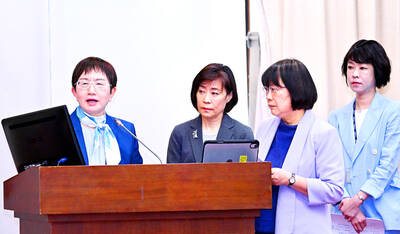LinkedIn, the social media network owned by Microsoft Corp that focuses on business professionals, on Monday said it would cut 716 jobs as demand wavers, while also shutting down its China-focused job application.
LinkedIn, which has 20,000 employees, grew its revenue every quarter last year, but joins other major technology companies, including its parent, in laying off workers amid a weakening global economic outlook.
In the past six months, more than 270,000 tech jobs have been cut globally, says Layoffs.fyi, which has been tracking the fallout.

Photo: Reuters
Before LinkedIn’s announcement, 5,000 technology jobs had been eliminated this month alone, Layoffs.fyi says.
In a letter to employees, LinkedIn CEO Ryan Roslansky said the move to cut roles in its sales, operations and support teams was aimed at streamlining the company’s operations, and would remove layers to help make quicker decisions.
“With the market and customer demand fluctuating more, and to serve emerging and growth markets more effectively, we are expanding the use of vendors,” Roslansky wrote.
The vendors are “external partners” who would take on new and existing work, a LinkedIn spokesperson said.
Roslansky said that the changes would result in the creation of 250 new jobs.
Employees affected by the cuts would be eligible to apply for those roles, the spokesperson added.
LinkedIn also said that it was eliminating the slimmed-down jobs app that it offers in China after it decided in 2021 to mostly withdraw from the country.
The remaining China app, called InCareer, is to be phased out by Aug. 9, LinkedIn said.
“Despite our initial progress, InCareer faced fierce competition and a challenging macroeconomic climate, which ultimately led us to the decision of discontinuing the service,” the company said.
LinkedIn would retain a presence in China to help companies operating there to hire and train employees outside the country, the spokesperson said.

TECH CLUSTER: The US company’s new office is in the Shalun Smart Green Energy Science City, a new AI industry base and cybersecurity hub in southern Taiwan US chip designer Advanced Micro Devices Inc (AMD) yesterday launched an office in Tainan’s Gueiren District (歸仁), marking a significant milestone in the development of southern Taiwan’s artificial intelligence (AI) industry, the Tainan City Government said in a statement. AMD Taiwan general manager Vincent Chern (陳民皓) presided over the opening ceremony for the company’s new office at the Shalun Smart Green Energy Science City (沙崙智慧綠能科學城), a new AI industry base and cybersecurity hub in southern Taiwan. Facilities in the new office include an information processing center, and a research and development (R&D) center, the Tainan Economic Development Bureau said. The Ministry

ADVERSARIES: The new list includes 11 entities in China and one in Taiwan, which is a local branch of Chinese cloud computing firm Inspur Group The US added dozens of entities to a trade blacklist on Tuesday, the US Department of Commerce said, in part to disrupt Beijing’s artificial intelligence (AI) and advanced computing capabilities. The action affects 80 entities from countries including China, the United Arab Emirates and Iran, with the commerce department citing their “activities contrary to US national security and foreign policy.” Those added to the “entity list” are restricted from obtaining US items and technologies without government authorization. “We will not allow adversaries to exploit American technology to bolster their own militaries and threaten American lives,” US Secretary of Commerce Howard Lutnick said. The entities

Minister of Finance Chuang Tsui-yun (莊翠雲) yesterday told lawmakers that she “would not speculate,” but a “response plan” has been prepared in case Taiwan is targeted by US President Donald Trump’s reciprocal tariffs, which are to be announced on Wednesday next week. The Trump administration, including US Secretary of the Treasury Scott Bessent, has said that much of the proposed reciprocal tariffs would focus on the 15 countries that have the highest trade surpluses with the US. Bessent has referred to those countries as the “dirty 15,” but has not named them. Last year, Taiwan’s US$73.9 billion trade surplus with the US

The Taipei International Cycle Show (Taipei Cycle) yesterday opened at the Taipei Nangang Exhibition Center, with the event’s organizer expecting a steady recovery in the industry this year following a tough last year. This year, 980 companies from 35 countries are participating in the annual bicycle trade show, showcasing technological breakthroughs and market development trends of the bicycle industry at 3,600 booths, the Taiwan External Trade Development Council (TAITRA, 外貿協會) said in a statement. Under the theme “Ride the Revolution,” the exhibition has attracted more than 3,500 international buyers from 80 countries to preregister for the four-day event, which is expected to